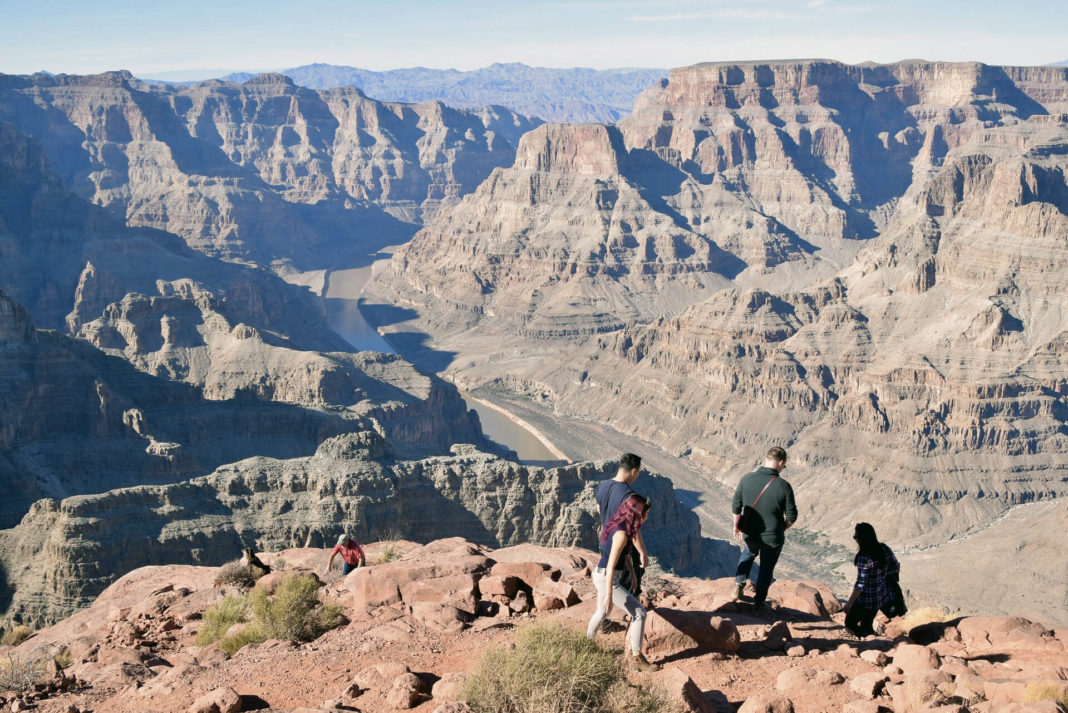On the South Rim of the Grand Canyon as well as on the North Rim, visitors’ resources are available. Grand Canyon tourism brings nearly 90% of visitors to the South Rim during the months of June to August. The benefit of visiting the Grand Canyon in the summer is that it provides plenty of daylight hours in addition to the large crowds, extreme heat, and rain.
Due to summer vacation schedules and breaks in school, the spring (March-May) and fall (September – November) are generally considered to be the best seasons to visit Grand Canyon National Park. While it’s easier to enjoy hikes, lodging, and natural scenery in the spring and fall when it’s not so crowded, there are far fewer people and cooler temperatures during the summer months.
Best Time to Visit the Grand Canyon
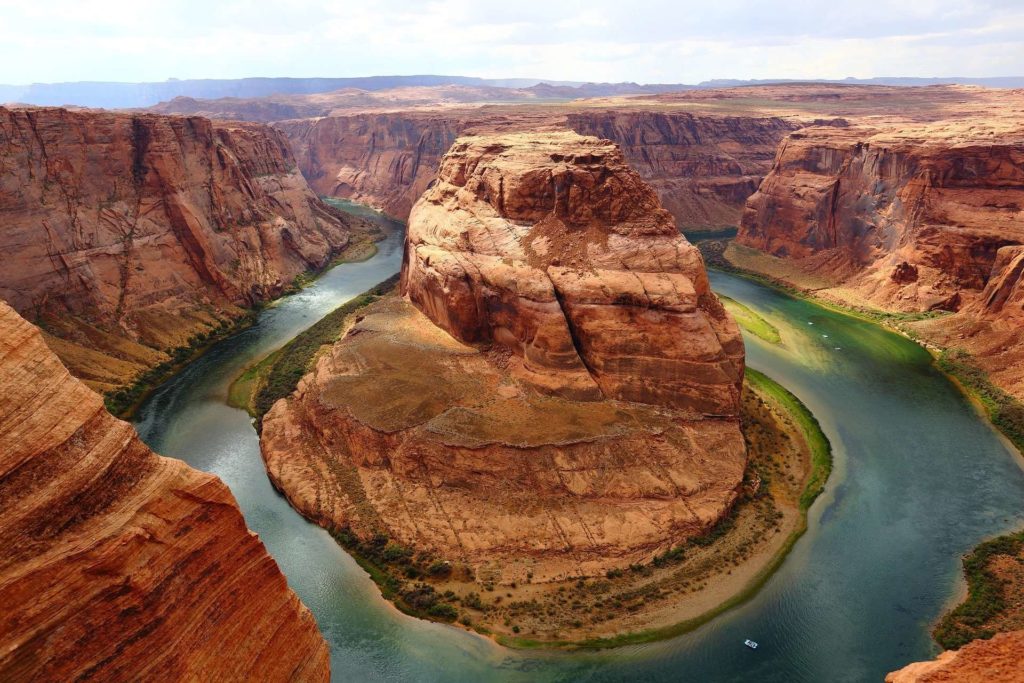
Regardless of the season, the views from the Grand Canyon are incredible. Spring (March through May) and autumn (September through November) are the best times to visit the Grand Canyon (September – October). The spring and fall months are less crowded and have pleasant weather to enjoy the beautiful landscapes during those times.
Though snow is still expected through May on the South Rim of the Grand Canyon, April brings a brief respite from winter weather on the Rim. Average temperatures rise into the seventies during the spring, with overnight temperatures that stay below freezing the entire year. If you want to experience the canyon during the spring months, the ideal time to do so is before interior temperatures have climbed above 100 degrees in the summer.
Summer vacationers are largely gone from the national park by the middle of September, making the fall one of the most scenic times to visit the Grand Canyon. Over the course of the year, the national park transitions from its wetter season to its drier season. During this transition, rain and thunderstorms occur less frequently. On the South Rim, temperatures drop from around 70 degrees Fahrenheit in the summer to 50 degrees Fahrenheit in the winter. The interior of the park varies from the upper 90s to the upper 60s throughout the year.
Best Month to Visit Grand Canyon National Park
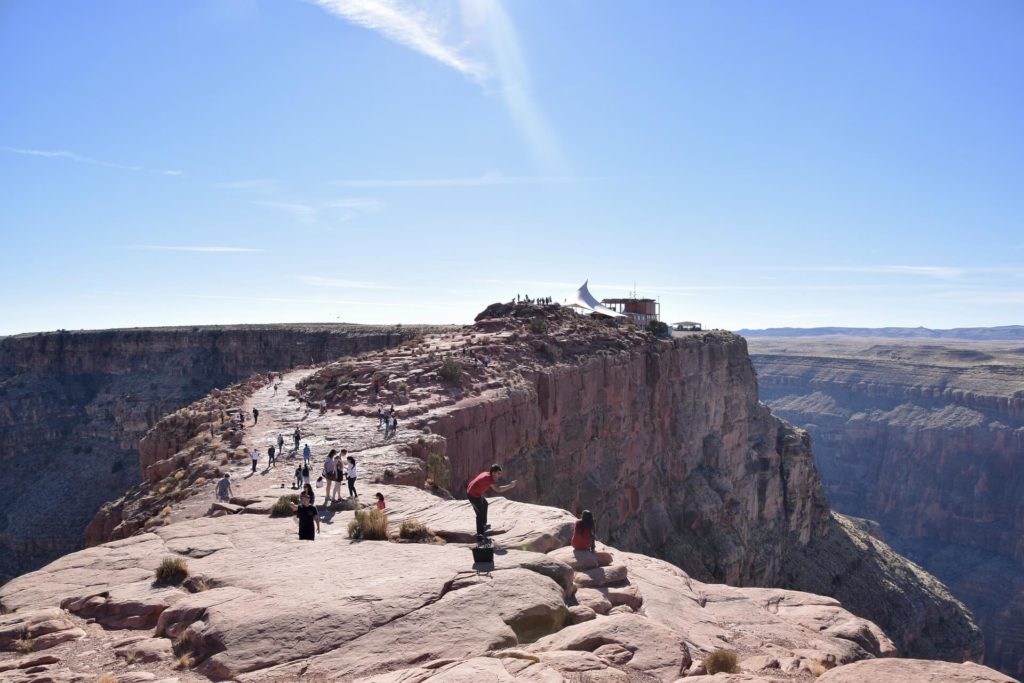 Regardless of the time of year, a visit to the Grand Canyon is most rewarding in May or September. Better-quality weather and smaller crowds during this time of year afford everything the Grand Canyon has to offer, allowing you to enjoy the area without the added stress of having to hunt for a parking space.
Regardless of the time of year, a visit to the Grand Canyon is most rewarding in May or September. Better-quality weather and smaller crowds during this time of year afford everything the Grand Canyon has to offer, allowing you to enjoy the area without the added stress of having to hunt for a parking space.
The Grand Canyon’s North Rim opens to vehicle traffic during the middle of May, allowing tourists some relief. On an average day in May, the temperature rarely dips below 70 degrees Fahrenheit. While advance reservations are still strongly recommended, the month of May is an easier time to stay at establishments like the Bright Angel Lodge.
A similar effect occurs around the beginning of September, specifically following Labor Day. A number of the existing resources like guided adventures, dining, and campgrounds remain accessible throughout the month of September and into October, with reduced demand. September is also great for hiking in the Grand Canyon because the canyon’s interior warms up later in the month.
An optimal time to visit the Grand Canyon is during the summertime. The Grand Canyon experiences a noticeable increase in visitors in June, though the earlier part of the month is less crowded than the weeks leading to July.
Best Season to Visit the Grand Canyon
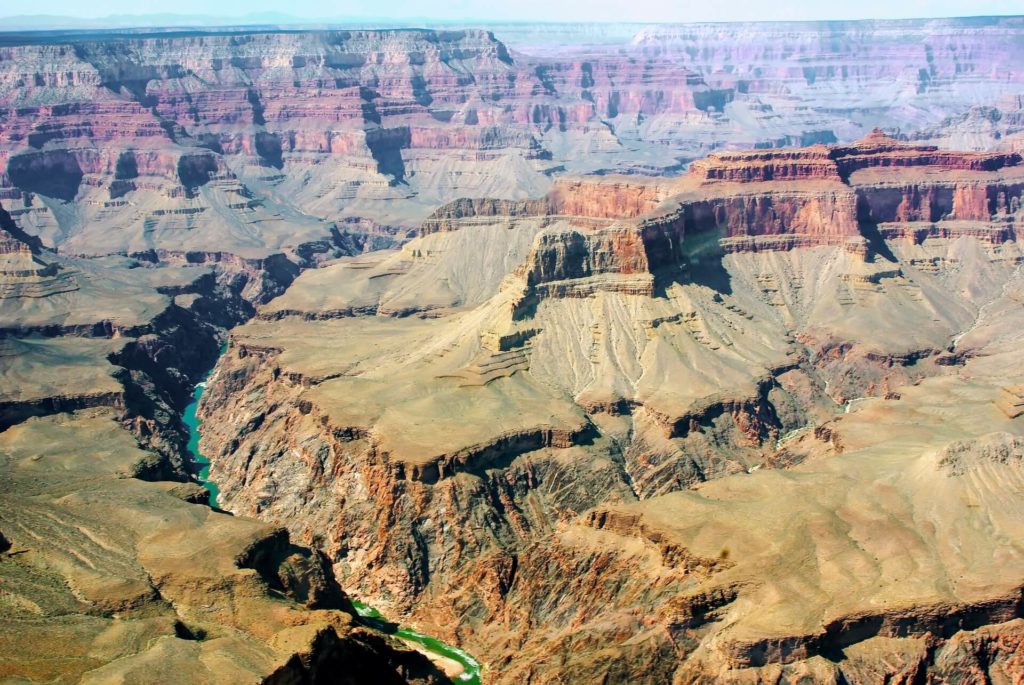 In the spring and fall, when temperatures are moderate and crowds are smaller, the Grand Canyon is a good destination. Because temperatures in the Grand Canyon interior are hotter in the spring and fall, hiking is especially popular in those seasons. During the spring and early summer, there are beautiful wildflowers that bloom in the park, and in the fall, the weather is much drier.
In the spring and fall, when temperatures are moderate and crowds are smaller, the Grand Canyon is a good destination. Because temperatures in the Grand Canyon interior are hotter in the spring and fall, hiking is especially popular in those seasons. During the spring and early summer, there are beautiful wildflowers that bloom in the park, and in the fall, the weather is much drier.
June, July, and August are the months that make up the peak visitation season of the Grand Canyon. In the summer, there are long days, more traffic, and fast-moving weather systems in the Grand Canyon. In the summer, the interior of the Grand Canyon reaches temperatures of over 100 degrees Fahrenheit, so visitors should plan to be finished hiking by 10 AM.
It should be noted, however, that during the summer months at the Grand Canyon, it is best to visit. It is important to prepare ahead of time to avoid summer rush-hour traffic, and the free shuttle system at the park alleviates parking concerns. With intense sunsets, hours of daylight, and warm evening temperatures, it’s the perfect time to head on a road trip to the Grand Canyon.
Winter: As the winter months bring very cold weather and short days, the Grand Canyon South Rim remains fairly deserted. During these months, fewer financial and material resources are available, and the entire North Rim is inaccessible by car. Visitors arriving prepared with warm clothing and transportation are treated to astounding views of the Grand Canyon. Also, while wearing multiple layers of clothing, visitors are granted a completely new perspective of the canyon.
Best Time of Day to Visit the Grand Canyon
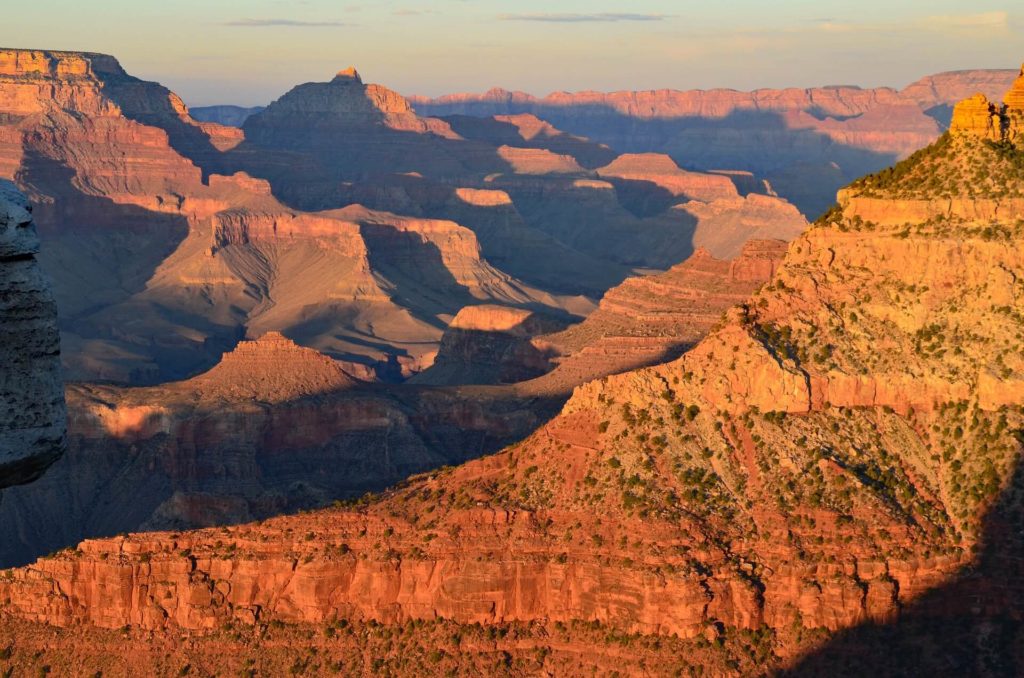 Sunset is the best time of day to visit the Grand Canyon at any time of the year. In this scene, you can see purple, orange, and the dying light of day dancing across the canyon walls. Sunset views from anywhere along the rim are great, and popular areas like Mather Point and Hopi Point are considered by many to be excellent places to see the sunset.
Sunset is the best time of day to visit the Grand Canyon at any time of the year. In this scene, you can see purple, orange, and the dying light of day dancing across the canyon walls. Sunset views from anywhere along the rim are great, and popular areas like Mather Point and Hopi Point are considered by many to be excellent places to see the sunset.
For a couple of reasons, the South Rim of the Grand Canyon is a great place to visit before the summer heat arrives in the afternoon. In the Grand Canyon, interior temperatures can reach over 100 degrees Fahrenheit. This tends to drive visitors to arrive early in order to beat the summer heat. Getting to the venue early also helps dodge the summer road and parking congestion.
Even during the spring and fall, a visit to the Grand Canyon is more enjoyable if done in the early morning. It is advisable to avoid hiking within the canyon during the summer between 10 AM and 4 PM because the temperatures in the canyon are excessively hot during those seasons. If you’re going on a hike, you should prepare in advance for the challenging terrain and try to set out early.
Best Way to Visit the Grand Canyon during Summer
 The best travel schedule to the Grand Canyon often includes traveling in the summer. Crowded conditions at the rim and the hot temperatures of the canyon’s interior are challenging to deal with unless you are well-prepared.
The best travel schedule to the Grand Canyon often includes traveling in the summer. Crowded conditions at the rim and the hot temperatures of the canyon’s interior are challenging to deal with unless you are well-prepared.
Arriving before 9 AM can help alleviate the issues of finding parking and also keep visitors cooler during the summer. If you plan on hiking in the Grand Canyon during the afternoon, you should do so during the early morning hours. Due to the climate and the relatively scarce rainfall, the temperature at the South Rim fluctuates between the upper 70s and lower 80s throughout the summer.
Go to the North Rim in the summer to see the Grand Canyon. North Rim visitors make up a smaller percentage of visitors to the Grand Canyon because of the long drive to access it. Gain some extra mileage for your destination and find plenty of room to spare at the overlooks at the canyon.
On the North Rim, temperatures are lower due to the elevation difference between the two rims (approximately 8,200 feet compared to 6,800 feet). To access the North Rim, road accesses are only available between the middle of May and the middle of October.
Best Time of Year to Hike the Grand Canyon
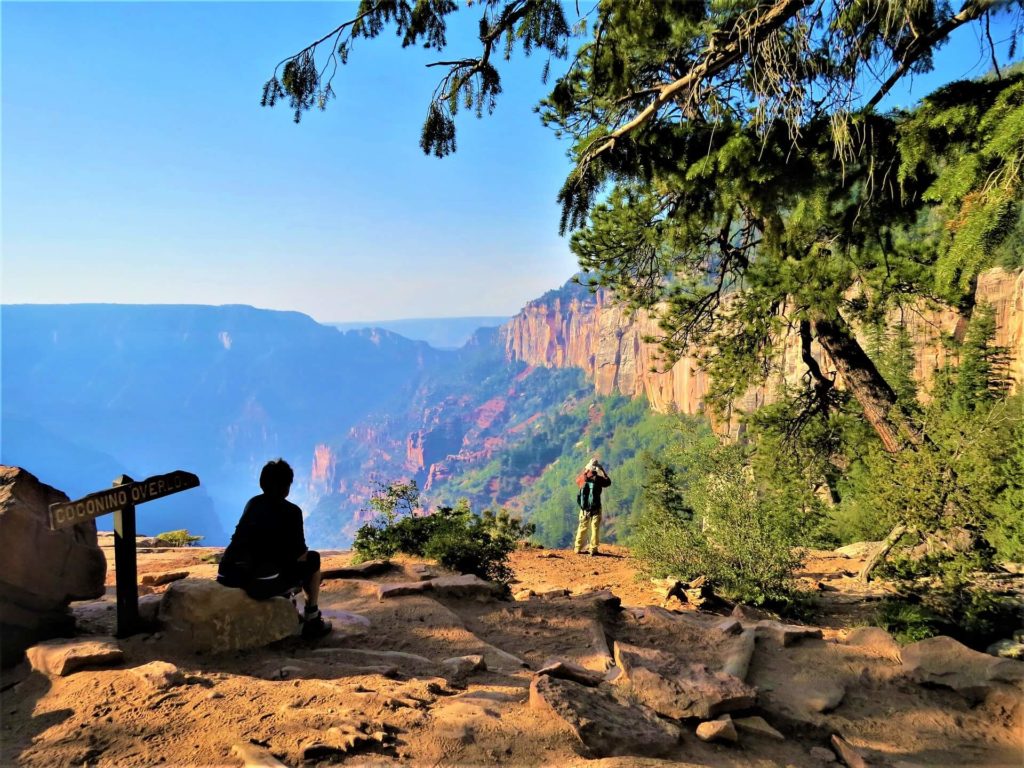 Due to the Grand Canyon’s high altitude, most of the park’s best hiking trails lead from the rim all the way to the Colorado River, instead of from the canyon floor to the rim. A route descends over 4,000 feet to the canyon floor on trails like the Bright Angel Trail and South Kaibab Trail on the South Rim. As the canyon floor is warmer than the rim, hikers will notice a substantial change in temperature on the way down.
Due to the Grand Canyon’s high altitude, most of the park’s best hiking trails lead from the rim all the way to the Colorado River, instead of from the canyon floor to the rim. A route descends over 4,000 feet to the canyon floor on trails like the Bright Angel Trail and South Kaibab Trail on the South Rim. As the canyon floor is warmer than the rim, hikers will notice a substantial change in temperature on the way down.
Spring and fall are the best times of year to hike the Grand Canyon because the temperatures are bearable then. On the way down into the canyon, interior temperatures are likely to rise into the 80s and 90s during the spring and fall. Getting to the Grand Canyon well ahead of the shoulder seasons is recommended.
Proper insulation, including crampons, as well as the ability to use them, is necessary if one plans to brave the icy trails of the Grand Canyon in the winter.
Best Time of Year to White Water Raft in the Grand Canyon
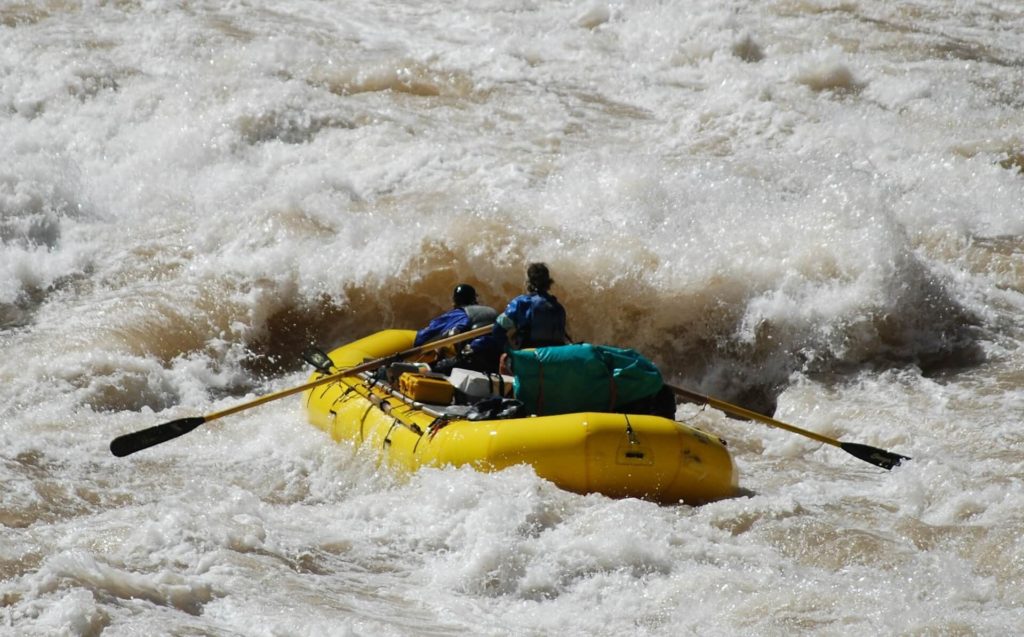 White water rafting on the Colorado River offers unique experiences all year long. The whitewater rafting season officially begins in April and continues through October. All months are popular and competitive for obtaining a permit or reserving a guide.
White water rafting on the Colorado River offers unique experiences all year long. The whitewater rafting season officially begins in April and continues through October. All months are popular and competitive for obtaining a permit or reserving a guide.
In the early part of the season, temperatures are slightly cooler and the water is calmer in the Grand Canyon. More scenic travel and side-hiking are possible because of these conditions. White water season lasts from mid-September to early November. Following this date, non-motorized boats are permitted on the Colorado River, and the water is calmer as a result.
As the temperatures climb, the interior of the canyon surrounding the Colorado River heats up to above 100 degrees Fahrenheit. Also, when more electricity is needed in the surrounding region, the Glen Canyon Dam releases additional water, causing bigger waves and water features on the river. Additional demand for adrenaline-pumping white water experiences spikes in the summer, making it harder to book guided tours.
Best Time of Year to Visit the Grand Canyon Skywalk
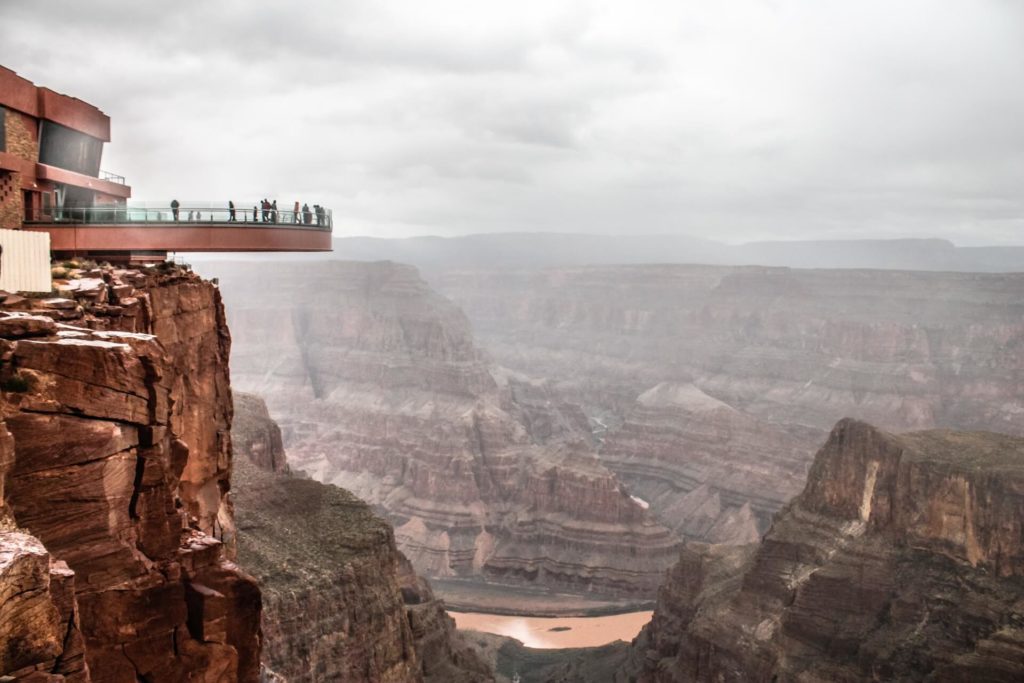
The Grand Canyon West Rim is a destination that the Hualapai Tribe runs and attracts a lot of visitors. Visitors, such as tourists who have chosen to stay in lodging, restaurants, and cool white water rafting spots, like to visit the Skywalk at the West Rim, which offers some of the most jaw-dropping views in the park.
The Skywalk Bridge, with a glass floor and sidings that allow visitors to see 4,000 feet down, extends 70 feet into the canyon. The views from this vantage point are always worth the two-hour drive from Las Vegas, but wait times are lower in the fall and spring. Due to the best time of year to go white water rafting on the West Rim coinciding with the best time of year to visit, spring is a good time to visit as well.
Grand Canyon in the Winter
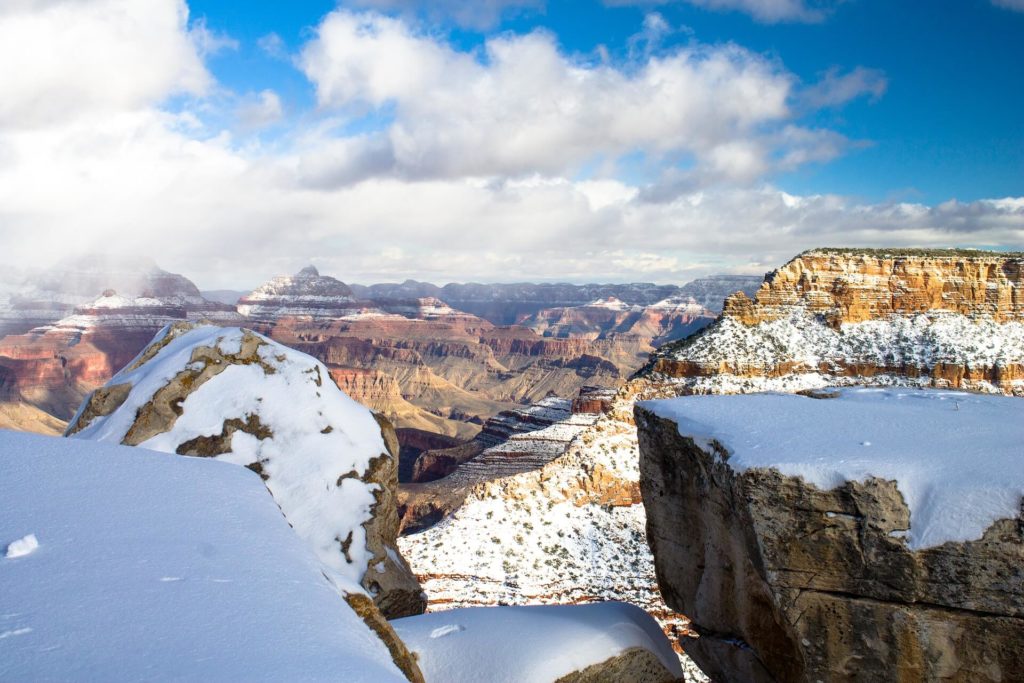 The majority of visitors to the Grand Canyon do not go during the winter, which means it is the perfect time of year to visit if you want to avoid the most crowded parts of the park. Due to its inaccessibility during the winter, the North Rim of the Grand Canyon is only open to visitors on the South Rim. Clothing should be worn that keeps visitors warm as daytime temperatures range from 40 to 60 degrees Fahrenheit, and night-time temperatures fall to well below freezing.
The majority of visitors to the Grand Canyon do not go during the winter, which means it is the perfect time of year to visit if you want to avoid the most crowded parts of the park. Due to its inaccessibility during the winter, the North Rim of the Grand Canyon is only open to visitors on the South Rim. Clothing should be worn that keeps visitors warm as daytime temperatures range from 40 to 60 degrees Fahrenheit, and night-time temperatures fall to well below freezing.
It’s often enough to inspire a winter vacation simply to witness the amazing silence that accompanies a view of the Grand Canyon that’s encircled by winter. When traveling, be prepared for unpredictable road conditions, especially following a storm. Being aware of the weather can help you decide when to go to the Grand Canyon for the winter. This is especially important if you have a flexible schedule.
Winter hiking may be possible, but on slick terrain, traction devices and a moderate level of experience on icy terrain will be needed.





